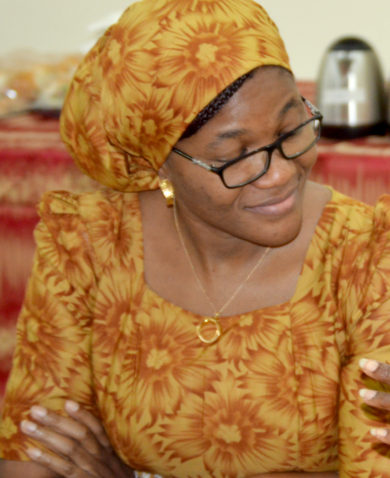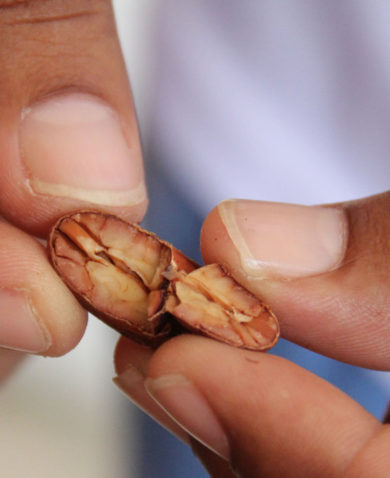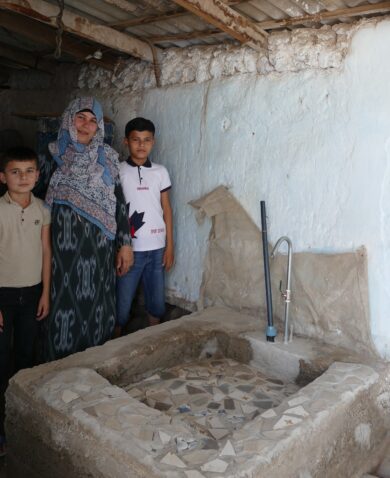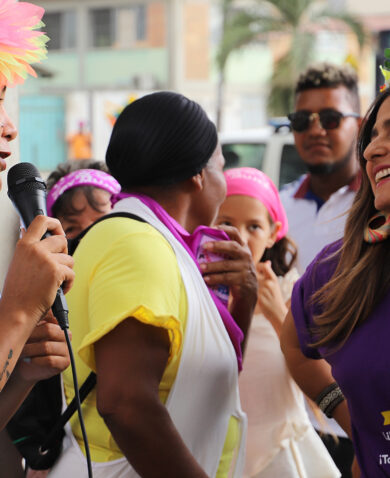
3 Questions with Zahra Mir: Inspiring Women for Greater Social and Economic Inclusion in Pakistan
September 28, 2017 | 4 Minute ReadIn Pakistan, livestock is an unexpected but effective entry point to examine women's social and economic inclusion. Zahra Mir explains why, and discusses challenges and solutions.
Why is social inclusion important for the development of Pakistan?
Social inclusion of women is crucial to the development of Pakistan. Regarding economic growth, 24 percent of the country’s gross domestic product (GDP) is derived from the agriculture sector, and over 55 percent of that sector is livestock. Small farmers own more than 85 percent of this livestock, and the primary caretakers are rural women. Research supports that they spend a major chunk of their time taking care of the animals by feeding and milking them, chopping fodder, and cleaning the sheds. Women hold the key to increasing productivity in the livestock sector, and are crucial to Pakistan’s economic growth. Including women in livestock initiatives equips them with the necessary abilities to carry out work in this sector, which leads to increased livestock production and subsequently an increase in GDP. Moreover, certain animals like sheep and goats are imperative to rural women as the only source of income entirely under their control, and providing opportunities for women to learn about best practices increases their ability to earn a living.
Secondly, Pakistan ranks near the bottom of the Gender Inequality Index. Although women in urban areas are increasingly gaining tertiary education, participating in the electoral process, and gaining an greater role in household decision-making, the picture for rural women is not as bright. Despite being active participants in the livestock sector, they rarely receive any wider socioeconomic benefits from doing so. This weakens their capacity to make household decisions and subsequently reduces the amount of money spent on children’s health care and education. Empowerment of women is a critical ingredient for addressing pressing health and education challenges and for growing a vibrant economy.
What are some of the main challenges you have encountered when implementing inclusive activities?
The main challenge is that attaining social inclusion requires more than just economic integration. It also requires developing the capacity of women so that they are comfortable with and capable of taking part in activities that they haven’t been a part of in the past. Other challenges spring out from this very challenge.
Our flagship program, WEinSPIRE (Women Empowerment in South Punjab Through Investment in Rural Economy) has been designed to incentivize women in the livestock sector to invest in livestock businesses. They receive micro loans from microfinance banks, training on animal care and veterinary services from the Livestock and Dairy Department of the Punjab government, high-yielding animal breeds for purchase from breeder’s associations, and information alerts from a leading telecommunications provider. Access to credit will improve the women’s capacity to purchasing animals, the training sessions will ensure that the animal is reared well for maximum feed-to-weight-gain ratios, veterinary services will shield the animals from common diseases, and access to appropriate breeds will ensure that time and money is invested in the right animal. Subscriptions with a telecommunications provider will enable these women to obtain informative alerts on livestock nutrition and health on a sustainable basis.
There are also several other challenges that we’ve confronted in the implementation of WEinSPIRE and similar gender-inclusive programs:
- Sustainability: This is a key challenge, and refers to ensuring the continuity of the initiative after the project ends, and incentivizing all parties involved to remain engaged in their respective roles.
- Access to markets: Another challenge is access to markets for rural women. If they are to purchase and sell the animals reared under this project, they need market avenues, otherwise they will have no incentive to remain in the business.
- Access to information: Access to information on basic animal health and nutrition is also a challenge. Although women are the prime caretakers, they do not get information on improved animal care from their male counterparts and if they are obtaining credit for animal purchase, they need to know how to best utilize it by taking good care of the purchased animal.
- Mobility: Yet another challenge is that of mobility. If women are to attend training sessions on livestock-keeping practices, they need to be able to reach the training venue. Mobility is limited for rural women in most areas.
We’ve used a variety of innovative approaches to respond to these challenges.
What innovative approaches have you applied to include marginalized groups in your project?
The WEinSPIRE program is solely focused on women, and we’ve used innovative approaches as part of the program. As mentioned earlier, we can’t ensure inclusiveness without addressing the challenges associated with it. To overcome the challenge of fostering active participation from all partners, we must ensure that although women are the ultimate beneficiaries, they are not the only ones benefiting from the program. The sustainability factor has been carefully woven into the fabric of WEinSPIRE by design. This means that the program will lead to increased clientele for credit institutions, effective service delivery and achievement of targets for the Livestock and Dairy Department, increased animal sales for breeders and a larger customer base for the telecommunications provider.
Market access for female farmers has been taken care of by linking them to breeders for animal purchase and by planning marketing activities for animal sales. The telecommunications provider will be giving them access to information on frequently asked questions, prevalent diseases, market prices, and locations of markets. Training courses have been designed to enable the farmers to look after their animals in a better way and increase their herd productivity and incomes. Lastly, to ensure attendance, the training sessions have been organized at convenient locations on flexible timelines that are most fitting to female farmers. The program also provides stipends to all participants for transportation costs and provides meals at the training venue. Mobile training schools have been set up in the form of fully equipped buses for providing training to women at their doorsteps, where possible.










































